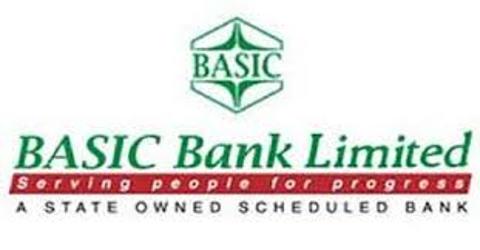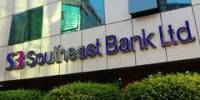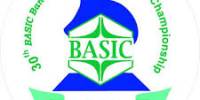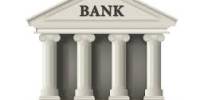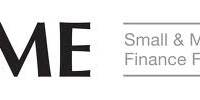That report covers overall impact of rate of interest changes on the bank named BASIC Bank Limited. It particularly focuses on Monthly interest Risk Exposure of this deposit holding of Basic Bank Limited. Report also focus monitory policy and fiscal policy in term of Interest Rate Change. Finally briefly describe and find out the problems of Deposit Maintaining Policy.
INTRODUCTION
Financial sector in Bangladesh comprises mainly of banks, insurance companies, stock markets, non-bank financial institutions and micro-financing institutions. Out of these, banking sector dominates the financial system, accounting for more than 95% of its total assets. Banking sector in Bangladesh suffers from chronic inefficiency. According to the World Bank’s Financial Sector Adjustment Credit (FSAC) Report (World Bank, 1995), problems in banking sector in Bangladesh can be generally categorized into four main groups:
- Economic – such as the loan rate of interest does not reflect real risk and price because of excessive control.
- Prudential – such as the capital adequacy requirements are not effectively enforced, or there is no appropriate loan classification mechanism.
- Institutional – such as the weaknesses in loan screening and supervision system or weak management information system (MIS).
- Legal – such as the perpetuation of loan default system because of the delays and inadequacy originating the system.
All these problems give rise to a bigger problem in the banking sector – the loan default problem which reached its apex in the 1990s. Banking sector is the core sector of the economy. Performance of banking sector shows the overall economic condition of a country. Our study is to evaluate the performance of commercial banks in Bangladesh.
DEPOSITORY INSTITUTION
Depository institutions include commercial banks, savings banks, and credit unions. All are financial intermediaries that accept deposits.
These deposits represent the liabilities of the deposit-accepting institution. With the funds raised through deposits and other funding sources, depository institutions both make direct loans to various entities and invest in securities. Their income is derived from two sources:
- The income generated from the loans
- The securities they purchase and fee income.
Depository institutions are highly regulated because of the important role that they play in the country’s financial system. Demand deposit accounts are the principal means that individuals and business entities use for making payments and government monetary policy is implemented through the banking system.
ASSET/LIABILITY PROBLEM
The asset/liability problem that depository institutions face is quite simple to explain-although not necessarily easy to solve. A depository institution seeks to earn a positive spread between the assets it invests in (loan & securities) and the cost of its funds (deposits & other sources). The spread is referred to as margin. In generating spread income a depository institution faces several risks. These are the credit risk, regulatory risk and interest rate risk. Credit risk also called default risk, refers to the risk that a borrower will default on loan obligation to the depository institution.
RISK OF DEPOSITORY INSTITUTION
One unique characteristic of the banking sector is its exposure to the diversity and complexity of risks that sets it apart from other types of businesses. Thus risk management is one of the most serious concerns in the banking sector. The rapid pace of deregulation and globalization of the financial services has opened new frontiers that warrant risk management even a greater priority. The failure in sound risk management not only exposes a bank to business losses but also threatens its survival. The five core risks that exist in the banking operations in Bangladesh are as follows:
- Interest Rate Risk
- Credit risk.
- Liquidity risk
- Foreign exchange risk.
- Internal control and compliance risk.
- Money laundering risk.
Among these, credit risk is the most severe one. Credit risk can simply be defined as the probability that a bank’s borrower or counterparty will fail to meet its financial obligations in accordance with agreed terms. The goal of credit risk management is to maximise a bank’s risk-adjusted rate of return by minimizing its credit risk exposure. Banks need to manage the credit risk inherent in its entire credit operation as well as the risk in individual credits or transactions. Banks should also consider the relationships between credit risk and other risks. The effective management of credit risk is a critical component of a comprehensive approach to risk management and essential to the long-term success of any banking organisation.
The credit risk management in Bangladesh banking sector involves two main dimensions: (1) sector’s overall credit-related regulatory and policy framework within which the banks operate, and (2) individual bank’s credit risk mitigation practices. The regulatory and policy framework for credit risk management in Bangladesh will be examined in this part of the report. The next part will focus on the credit risk management practices of Dutch-Bangladesh Bank Limited itself.
Overview of Bangladesh Banking Sector
Before analyzing the regulatory and policy framework for credit risk management, it is imperative to portray a general picture of the banking sector in Bangladesh.
Banks in Bangladesh. At present there are 49 banks with 6253 branches operating in Bangladesh (Bangladesh Bank, 2004). The banking sector in Bangladesh comprises five types of banks as shown bellow:
- Nationalized Commercial Banks (NCBs)
- Development Finance Institutions (DFI):
- Non-Islamic Private Commercial Banks (PCBs):
- Islamic PCBs:
- Foreign Commercial Banks (FCBs):
Evolution of the Banking Sector in Bangladesh:
After the independence on December 16, 1971, the Provisional Government of Bangladesh promulgated a law called Bangladesh Bank (Temporary) Order 1971(Acting Presidents Order No. 2 of 1971) by which the State Bank of Pakistan was declared as Bangladesh Bank and the offices, branches and assets of the said State Bank were declared to be deemed as offices, branches and assets of Bangladesh Bank. The Government also merged existing 12 banks inherited from the Pakistan regime and constituted 6 new nationalized banks: Sonali Bank, Janata Bank, Rupali Bank, Agrani Bank, Pubali Bank, and Uttara Bank. During the 1970s, the banking activities were directed at massive credit disbursement to help increase industrialization and productivity in the war-ravaged country as per the Government’s economic priority. But little attention was placed to identify problem loans and making provisions for them, although there was a significant amount of hidden default loans.
Since the beginning of 1980s, a rapid deregulation and privatization was initiated in the banking sector in order to increase efficiency, productivity, and competition. Two out of six nationalized commercial banks (Uttara Bank and Pubali Bank) were denationalized and a number of private commercial banks were allowed to operate. But the efficiency and credit discipline of the banking sector did not increase, rather loan default situation further worsened. In fact, there were no clear-cut policy guidelines and prudential regulations from the central bank on provisioning of classified loans and recovery of defaulted loans.
Recognizing the need to reform the financial sector, the Government formed a commission named National Commission on Money, Banking and Credit to undertake a major study of the financial sector in late 1984. Commission made its recommendation for financial sector reform in 1986. The loan default problem was recognized as the most serious issue that needed to be addressed. The World Bank also started a long term project named Financial Sector Reform Project (FSRP) in 1990 with a view to conduct an in-depth study on the financial sector of Bangladesh and to suggest necessary reform measures.
As per the FSRP recommendations, the Government launched a number of measures including new rules and regulations for screening, monitoring and recovery of loans, and also enacted new laws and amended the old ones to ensure lenders’ recourse. Even after adopting many measures neither loan quality nor recovery situation improved. This was mainly due to the weak and lengthy judicial procedure which failed to ensure adequate punitive actions against the defaulted borrowers. The FSRP reform measures also had their own inconsistencies. For instance, there existed a mismatch between loan screening and monitoring standard and loan classification standard. The loan monitoring and screening system was less enforcing and remained far below the international standard, while the loan classification and other prudential requirements were asked to be complied at international standard. As a result of such inconsistency, proportion of classified loan appeared to be magnified.
After the expiry of FSRP in 1996, the Government formed Banking Reform Committee (BRC) with the objective of continuing further reform in the banking sector. Almost simultaneously, another World Bank project named Commercial Banking Restructuring Project (CBRP) started working since 1997. BRC opined that the supervisory and regulatory forbearance of Bangladesh Bank has been one of the main reasons for the accumulated banking problems and BRC’s recommendation thus put highest importance on strengthening the supervisory and regulatory capacity of Bangladesh Bank for amelioration of the default loan situation. As per the recommendations made by BRC and CBRP, reform and restructuring initiatives have been undertaken by the Government to improve the banking sector condition. Till today newer policies and regulations are being instituted and older ones are being repealed or amended in this regard.
Credit Risk Management of Duch-Bangla Bank Ltd.(DBBL)
Credit Risk Management (CRM) is a part of the overall credit management system of a financial institution. Credit risk is the probability that a borrower or counter party will fail to meet its obligations in accordance with agreed terms. Credit risk, therefore, arises from the bank’s dealings with or lending to corporations, individuals, and other banks or financial institutions. CRM enables a bank to proactively manage its loan portfolios in order to minimize losses and earn an acceptable level of return for shareholders.
“Credit Risk Management on Dutch-Bangla Bank Limited” – is a report that makes an attempt to study the CRM practices at DBBL and find out how the Bank could maintain a very low loan default rate over the last few years.
Present Regulatory and Policy Framework
In recent years Bangladesh Bank has taken many steps to enable the commercial banks to minimise their exposure to risks. Such steps include prudential regulations and policies for enhancing risk management capacity of the banks as well as legal recourse against loan defaulters. This section takes a closer look at the present regulatory and legal structure for credit risk mitigation and sound loan portfolio management by the banks.
Prudential Policies and Guidelines: Following prudential guidelines and instructions were given by Bangladesh Bank for credit risk management by the banks:
Credit Policy: Bangladesh Bank circulated a Credit Risk Management Manual for the banks in October 2003. This manual is a comprehensive compilation of industry best practices in credit risk management, and Bangladesh Bank instructed all banks to adhere to the guidelines given in the manual in order to develop and maintain sound credit risk management systems. According to the manual, in the first and foremost place:
- All banks should have established Credit Policies that clearly outline the top management’s view of business development priorities and the terms and conditions that should be adhered to in order for loans to be approved.
- The Credit Policies should be updated at least annually to reflect changes in the macroeconomic environment and the evolution of the bank’s loan portfolio.
- The Credit Policies should be approved by the Board of Directors/Managing Director/Chief Executive Officer of the bank.
The credit policy is a statement of the bank’s basic credit philosophy. It provides a framework for achieving asset quality and earnings objectives, sets risk tolerance levels, and guides the bank’s lending activities in a manner consistent with the bank’s strategic direction. Credit policy sets standards for portfolio composition, individual credit decisions, fair lending, and compliance management.
Credit Assessment and Sanction: The critical elements of the prudential policies and guidelines of Bangladesh Bank include credit screening tools which effectively contribute in improving the loan portfolio management by selecting healthy and less risky loan opportunities. The credit screening tools include:
- Lending Risk Analysis (LRA): LRA analyses risks before lending. This tool can be used to analyze the essential risk elements of a credit facility in a systematic way which helps the banker to select a good risk combination of business risks and security risks. This enables to direct the loan portfolio management in banks in proper way with risk and return analysis. The commercial banks have to carry out LRA for extending credit of Taka 10 million and above as per Bangladesh Bank instruction (BRPD Circular 08, Dated March 18, 2003). Some of the banks are even using LRA for loans of Taka 2.5 million and above.
- Risk Grading System (RGS): Bangladesh Bank has circulated a Risk Grade Matrix and a Risk Grade Scorecard to the banks and instructed them to follow these tools for grading the clients in terms of degree of credit risk. The risk grading system defines the risk profile of borrowers to ensure that credit structure, volume, tenor and pricing are commensurate with the risk involved. All credit facilities should be assigned a risk grade. Where deterioration in risk is noted, the risk grade assigned to a borrower and his loan should be immediately changed. Borrowers’ risk grades should be clearly stated on credit proposals sent for head office approval. In addition to the bank’s internal grading, at least top twenty five clients/obligors of a bank should be rated by an outside credit rating agency.
Financial Spread Sheet (FSS): The past financial statements of a company are a primary indicator of its future financial performance. The financial spread sheet is an integrated credit analysis tool that makes use of the historical financial statements in assessing: (1) borrower’s business trend and efficiency, (2) his ability to repay, (3) comparative positions of the industry competitors. FSS has the following main sections:
- Balance sheet and profit and loss statement analysis.
- Cash flow statement analysis.
- Financial ratio analysis.
- Credit scores (“Z” Score and “Y” Score) based on combination of financial ratios.
Interest Rate Deregulation: Since 1990, interest rate structure was gradually deregulated. At present, there is no ceiling, floor or band for the determination of interest rate. It reflects that banks can fix up their own prices for financial services/products including deposits and credits depending on the market forces of demand and supply. Interest rate deregulation was sought for bringing competition in the banking sector as well as achieving efficient credit allocation by the banks.
Risk-weighted Loan Pricing: As per the recommendation of FSRP, Bangladesh Bank has suggested other banks to adopt risk-weighted loan pricing system. In this system, each borrower would require to pay risk premium in addition to the base interest rate on his loan according to the risky-ness of his business/project. Higher the risk involved, the higher would be the rate of interest charged on the borrower. The risk-weighted loan pricing helps a bank to get compensated for the degree of credit risks it takes for extending funds to the borrowers. But in practice, this sort of risk based pricing is yet to get root in our banking system.
Credit Information Bureau (CIB): A Credit Information Bureau was established at Bangladesh Bank with a view to maintain an up to date database on all borrowings by the individuals/groups/companies from all banks in Bangladesh. CIB collects borrowers’ information from all banks and disseminates to any commercial bank as and when it asks for credit information on any particular borrower. This information from CIB assists the commercial banks to know the status of a loan applicant in regard to his liabilities outstanding with any other banks/branches before considering his credit proposal. Obtaining CIB report was made mandatory by the central bank (Bangladesh Bank, BRPD Circular No. 13 Dated 26 October 2000) for the banks prior to sanctioning, renewal or rescheduling of large loans. In recent years, two private credit rating agencies namely, Credit Rating Information and Services Limited (CRISL) and Credit Rating Agency of Bangladesh (CRAB) have started providing credit rating services in Bangladesh. They publish credit ratings of well-known companies regularly.
Credit Restriction for Insiders and Their Relatives: A frequent cause of loan default problem in Bangladesh has been the credit granted to bank insiders and their relatives who have the ability to exert control, whether direct or indirect over the bank management. Such credits may not meet the standard screening criteria and the amount of credit often exceeds prudent levels. To preclude the problems of connected lending, the Section 45 of Bank Companies Act 1991 has been enacted which states that any loan facility or guarantee or security provided to a Director of a bank or to his relatives must be sanctioned by the Board of Directors of the bank, and approved in the general meeting, and has to be specifically mentioned in the Balance Sheet of the bank. However the total amount of the loan facilities extendable to a Director or to his relatives should not exceed 50% of the paid-up value of the shares of that bank held in Director’s own name.
Policy on Large Loans: In order to prevent the tendency of concentration of loans in favour of small number of individuals or groups and to prevent banks from taking excessive credit risk of extending such loans, Bangladesh Bank has set the following guidelines to be complied with:
According to Section 27 (3) of Bank Companies Act 1991, any credit facility above 15% of a bank’s capital is defined as large loan. In case of the loan facilities covered by encashable securities the percentage is 25% of the capital. Prior permission from Bangladesh Bank had to be obtained by a bank before sanctioning any loan facility defined as large loan to any client. This provision of pre-sanction approval by Bangladesh Bank was repealed by the Bank Companies (Amendment) Act 2003 (Bangladesh Bank BRPD Circular No. 8 Dated, March 18, 2003).
If a bank has classified loans/advances, it can not extend large loans more than specified limits as shown below (Bangladesh Bank DBOD Circular No. 4, Dated May 12, 2002):
| Net Classified Loans and Advances Held by the Bank | Maximum Allowable Limit of Large Loans as % of Total Loans |
| 0% – 5% | 56% |
| 6% – 10% | 52% |
| 11% – 15% | 48% |
| 16% – 20% | 44% |
| Above 20% | 40% |
Larg
Loan Restructuring Scheme (LLRS): In order to lessen the burden of potential risks involved in large loans, Bangladesh Bank has recently introduced LLRS to encourage banks to go for inter-bank loan syndication or consortium loans. LLRS helps banks to go for voluntary syndicated loans in case of a very large loan amount (Taka 500 million and above) with a view to ensuring a transparent loan restructuring and rescheduling mechanism involving the banks participating in the syndication.
Credit Administration: The following guidelines and policies have been introduced by Bangladesh Bank to help the banks in effective monitoring and recovery of the loans and advances:
New Loan Ledger Card (NLLC): Bangladesh Bank has instructed banks to introduce NLLC for improving the accounting practices in recording the loan status that would ensure easy identification of problem loans. NLLC records entries posted to “date due” “total due”, “date paid”, “total paid”, “over due” (days-wise), “total amount due (principal and interest)”. It enables the banker to know the status of a loan account.
Large Loan Review Cell (LLRC): Bangladesh Bank has set up LLRC to review all newly sanctioned, renewed and rescheduled loans by scheduled banks over Taka 10 million. LLRC helps banks in the credit monitoring and recovery process.
Performance Planning System (PPS): PPS plans for lending on good and profitable loan portfolios. This system calls for setting of goals with performance measures quantified. This system helps monitoring progress and improving managerial effectiveness and also managerial control for achievement of goals and objectives within a specified period. The banks are using this PPS in securing low cost deposits and recovery of bad loans.
Management Information System (MIS): MIS ensures timely and accurate credit information collection, preservation and dissemination. The computerized MIS report is a one page bank’s performance report which measures key performances ratios like gross margin, return on assets, yield on loan and advances, capital adequacy etc. This report has been designed to aid in credit planning by the banks’ top management.
Off-site Supervision (CAMEL Rating): In the context of off-site supervision, Bangladesh Bank determines a composite rating for each bank, known as CAMEL rating, based on the respective bank’s Capital, Asset quality, Management capability, Earning and Liquidity level. Basing on CAMEL rating, Bangladesh Bank identifies the problem banks and if necessary also provides Early Warning Signal (EWS) to such banks.
Credit Transparency and Provisioning: The following regulations and policies are given by the central bank for ensuring transparency in reporting and provisioning of loans by the banks:
Risk-weighted Capital Adequacy: Risk-weighted capital adequacy is a measure to protect the interests of depositors and stockholders in case of a bank’s business failure due to excessive credit defaults. The existing capital adequacy requirements for the banks on the basis of risk-weighted assets replacing the capital-to-liabilities approach were introduced by Bangladesh Bank in 1996. Then the capital level is set as a percentage of the risk-weighted assets. The revised policy on capital adequacy specifies that:
- Each bank will maintain a ratio of capital to risk weighted assets of not less than 9% with at least 4.5% in core capital.
- The minimum capital requirements (paid up capital and reserve) for all banks will be Taka 1 billion as per Bangladesh Bank Companies (Amendment) Act 2003.
Default Risk Models
Economists, bankers, and analysts have employed many different models to assess the default risk on loans and bonds. These vary from the relatively qualitative to the highly quantitative. Further, these models are not mutually exclusive, in that a Financial Institutions manager may use more than one to reach a credit pricing or loan quantity rationing decisions. We analyze a number of these models.
Qualitative models
In the absence of publicly available information on the quality of borrowers, the Financial Institutions manager has to assemble information from private sources – such as credit and deposit files – and /or purchase such information from external sources – such as credit rating agencies.
In general, the amount of information assembled varies with the size of the potential debt exposure and the costs of collection. However, a number of key factors enter into the credit decision. These include:
Borrower Specific Factors
Reputation
The borrower’s reputation involves the borrowing – lending history of the credit applicant. If, over time, the borrower has established a reputation for prompt and timely repayment, this enhances the applicant’s attractiveness to the Financial Institutions. A long-term customer relationship between a borrower and lender forms an implicit contract regarding borrowing and repayment that extends the formal explicit legal contract on which borrower – lender relationships based.
Leverage
A borrower’s leverage or capital structure – the ratio of debt to equity – affects the probability of its default. This is because large amounts of debt, such as bonds and loans, increase the borrower’s interest charges and pose a significant claim on its cash flows. As shown in the figure, the relatively low debt – equity ratios may not significantly impact the probability of debt repayment. Yet, beyond some point, the risk of bankruptcy increases, as done the probability of some loss of interest or principal for the lender.
Volatility of Earnings
As with leverage, a highly volatile earnings stream increases the probability that the borrower cannot meet fixed interest and principle charges for any given capital structure. Consequently, newer firms, or firms in high – tech industries with a high earnings variance over time, are less attractive credit risks than those with long and more stable earnings histories.
Collateral
As discussed earlier, a key future in any lending and long – pricing decision is the degree of collateral or assets backing the security of the loan. Many loans and bonds are backed by specific assets should a borrower default on repayment obligations. Mortgage bonds give the bondholder first claim to some specific piece of property of the borrower, normal machinery or buildings, debentures give a bondholder a more general and more risky claim to the borrower’s assets.
Market Specific Factor
The Business Cycle
The position of the economy in the business cycle phase is enormously important to a Financial Institutions in assessing the probability of borrower default. For example, during recessions, firms in the consumer durable goods sector that produce autos, refrigerators, or houses do relatively badly compared to those in the non-durable goods sector producing tobacco and foods.
The Level of Interest Rates
High interest rates indicate restrictive monetary policy actions by the Federal Reserve. Financial Institutions not only find funds to finance their lending decisions scarcer and more expensive but also must recognize that high interest rates are correlated with higher credit risk in general.
So far, we have delineated just a few of the qualitative borrower and economy – specific factors an Financial Institutions manager may take into account in deciding on the probability of default on any long or bond. Rather than letting such factors enter into the decision process in a purely subjective fashion, the Financial Institutions manager may weight these factors in a more objective or quantitative manner.
Credit Scoring Models
Credit scoring models use data on observed borrower characteristics either to calculate the probability of default or to sort borrowers into different default risk classes. By selecting and combining different economic and financial borrower characteristics, an FI manager may be able to:
- Numerically establish factor, which is important explaining default risk.
- Evaluate the relative degree or importance of these factors.
- Improve the pricing of default risk.
- Be better able to screen out bad loan applicants.
- Be in a better position to calculate any reserves needed to meet expected future loan losses.
Mortality Rate Models:
Financial Institutions managers analyze the historic or past default risk experience, the mortality rates, of bonds and loans of a similar quality.
If p1 is the probability of a grade B bond or loan surviving the first year of its issue; thus 1- p1 is the marginal mortality rate or the probability of the bond or loan dying or defaulting in the first year of the issue.
If p2 is the probability of a grade B bond or loan surviving the first year of its issue; thus 1- p2 is the marginal mortality rate or the probability of the bond of loan dying or defaulting in the second year of the issue.
Thus, for each grade of corporate borrower quality, a marginal mortality rate (MMR) curve can show the historical default rate experience of bond sin any specific quality class in each year after issue on the bond or loan.
Option Models
Employ option-pricing methods to evaluate the option to default. Used by many of the largest banks to monitor credit risk. KMV Corporation markets this model quite widely.
Theoretical Framework:
Following the pioneering work of Merton, Black and Scholes an others, it is now recognized that firms, which raise funds either by issuing bonds or increasing its bank loans, hold a very valuable default or repayment option.
That is, if a borrower’s investment projects fail, it has the option of defaulting on its debt repayment and turning any remaining assets over to the debt holder.
On the other hand, if things go well, the borrower can keep most of the upside returns on asset investments after the promised principal and interest on the debt have been paid.
Applying Option Valuation Model
Merton has shown that in the context of the preceding options framework, it is quite straightforward to express the marker value of a risky loan made by a lender to a borrower.
Theoretically, this model is an elegant tool for extracting premiums and default probabilities; it also had important conceptual implications regarding which variables to focus on in credit risk evaluation.
Limitations:
The assumption- continuously traded claim on the assets of the borrower- is difficult to accept in many cases.
The value of option-based premiums is extremely sensitive to errors made in measuring.
INTEREST RATE RISK
All depository institutions face the interest rate risk. Managers of depository institution who have particular expectations about the future direction of interest rates will seek to benefit from these expectations. Those who expect interest rates to rise may pursue a policy to borrow funds for long time horizon and lend funds for a short time horizon. If interest rates are expected to drop, managers may elect to borrow short and lend long. The managers of depository institutions who have the ability to forecast interest rate moves so consistently that the institution can benefit should the forecast be realized.
Inherent in any balance sheet of a depository institution is interest rate risk exposure. Managers must be willing to accept some exposure, but they can take various measures to address the interest rate sensitivity of the institution’s liabilities and its assets. A depository institution will have an asset/liability committee that is responsible for monitoring the interest rate risk exposure.
In determining the relationship between deposit and interest rate we have focused our analysis on DBBL a new generation state-owned commercial bank.
Effect on Deposit due to interest rate change
Banks deposit policy is basically reflected on the economic conditions that might be faced recession along with booming condition of the economy. When the economy faces recession then it is clear that the financial institution or the depository institution will tend to reduce it’s cost by reducing interest rate on deposit. Thus the organization will faces some strains as depositors will not be interested to deposit more in the specific institution. In such cases the institution should made some policy renewing to face with the situation with best possibility to enhance its depositors to deal still with it. But it may not seem as quietly possible as other economic conditions should also be considered in doing so.
Bangladesh Small and Cottage Industry has specific rules regarding such situation. It has to invest about 50 percent of its investment in small and cottage industry. The savings and fixed deposit which consists about 60 percent of total deposit mainly collected from Govt. owned organizations.
BASIC bank tend to reduce this interest rate when it’s expenses including operating and administration items are high enough to be covered by it’s earnings from loan and advances.
In such cases the clients may be dissatisfied but the banking institution has to maintain this to survive. BASIC bank is continuing its operation with success for the last 15 years with maintaining such policy. But there are some reasons behind such success that the institution always perfectly replicate the present economic condition in maintaining its policy. Thus the efficient market analysis and perception of present situation has enabled the institution be able to cope up with any distress situation.
The inability to presume such condition of economy might fell the depository institution at a distress situation. So any organizations should be sincere and active enough to handle any situation regarding its deposit position. The interest rate is the main factor to be considered and determine to be in safe in such situation.
FINANCIAL ANALYSIS
| Year | Deposit | Interest exp. | Rate | Advances | Interest | Rate |
| 1997 | 2,474,248,677 | 169,878,192 | 0.0687 | 3,503,490,245 | 326,478,400 | 0.0932 |
| 1998 | 3,040,643,876 | 256,519,584 | 0.0844 | 4,509,594,625 | 464,361,905 | 0.1030 |
| 1999 | 5,647,935,194 | 384,398,258 | 0.0681 | 3,960,113,742 | 531,967,062 | 0.1343 |
| 2000 | 5,845,153,243 | 401,413,052 | 0.0687 | 4,618,730,861 | 646,636,562 | 0.1400 |
| 2001 | 7,512,624,341 | 455,741,407 | 0.0607 | 6,260,779,880 | 786,147,107 | 0.1256 |
| 2002 | 10,021,243,177 | 599,250,966 | 0.0598 | 7,957,035,973 | 998,733,979 | 0.1255 |
| 2003 | 11,266,538,986 | 692,088,312 | 0.0614 | 9,282,199,736 | 1,219,393,866 | 0.1314 |
| Correlation Between Deposit Amount and Interest |
| -0.75792 |
| Correlation Between Advances and Interest |
| 0.3918 |
Different Rates on Deposit and on Loan and Advances:
| Yield on Assets | Dec-03 | Dec-04 | |
| Average Lending | |||
| Term Loan | 11.27 | 10.75 | |
| Working Capital | 11.28 | 10.86 | |
| Commercial | 13.63 | 11.33 | |
| Micro Credit | 10.57 | 8.99 | |
| Total | 11.99 | 10.93 | |
| Due From Banks | 6.99 | 6.1 | |
| Investment | 6.61 | 6.05 | |
| Average Yield | 10.1 | 9.35 | |
| Cost of liabilities | |||
| Cost of Deposit | |||
| Fixed Deposit | 8.09 | 8 | |
| Short term Deposit | 4.4 | 4.02 | |
| Savings | 4.55 | 5.954 | |
| Current | 0 | 0 | |
| Others | 0 | 0 | |
| Total | 6.05 | 5.92 | |
| Cost of Borrowing | 5.33 | 4.95 | |
| Average Cost | 6.01 | 5.86 | |
| Spread | 4.09 | 3.49 |
Measuring interest rate sensitivity:
Gap Analysis:
Gap is the most common measure used to find out the interest sensitivity position of a financial institution. It is defined as the difference between the interest rate-sensitive assets and the interest rate- sensitive liabilities.
Interest rate-sensitive assets (RSAs): RSAs are those whose interest earnings change with the general movement of interest rates within some defined period.
Interest rate-sensitive liabilities (RSLs): RSLs are those whose interest costs changes with the general movement of interest rates within some defined period.
Gap = Rate Sensitive Asset (RSAs) – Rate Sensitive Liabilities (RSLs)
Relative Gap Ratio= Gap $/ Total Assets
Interest rate sensitivity ratio = RSA ($) –RSL($)
Rate Sensitive Asset (RSA) and Rate Sensitive Liabilities (RSL) of SBL
The GAP, Relative Gap Ratio and Rate Sensitivity Ratio of SBL:
|
The bank is maintaining positive gap ratios over time except in year 1997 its gap is negative.From the table we can see that interest rate sensitivity was more in year 1999 then its has decreased over last two years.
Capital Adequacy of Southeast Bank Limited
Bank supervision has reached the point where regulators now specify minimum amounts of equity and other qualifying capital that banks must obtain to continue operations which is termed as Capital Adequacy.
According to Basel Accord the following formulas are used to calculate the Capital Adequacy Ratio ––
CAR of Southeast Bank Limited
| SBL | 2001 | 2000 | 1999 | 1998 | 1997 |
| Capital Adequacy Ratio | 8.77% | 8.40% | 9.52% | 8.16% | 6.74% |
Source: Annual report 2001-2000.
| Rating | Condition | Composite Range |
| 1 | Strong | 9.00% and above |
| 2 | Satisfactory | 8.00% – 8.99% |
| 3 | Fair | 7.00% – 7.99% |
| 4 | Marginal | 5.00% – 6.99% |
| 5 | Unsatisfactory | 4.99% and above |
SBL failed to fulfill the Capital Adequacy Ratios in the year 1997, which is under 8% leaving it in Zone 5 that is Critically Undercapitalized. The basic reason behind this scenario is the very low Capital and Shareholders’ Equity in terms of Total Asset. The Southeast Bank Limited maintains capital adequacy ratio every year except year 1997. Since the ratio is above than required ratio 8% it is satisfactory position (Rating-2).
LIQUIDITY CONCERN
Besides facing credit risk and interest rate risk, a depository institution must be prepared to satisfy withdrawals of funds by depositors and to provide loans to customers. There are several ways that a depository institution can accommodate withdrawal and loan demand:
- Attract additional deposits,
- Use existing securities as collateral for borrowing from financial institution
- Raise short-term funds in the money market
- Sell securities that it owns.
Liquidity of a bank refers to ability of a bank to honor its obligations to the cliental groups, deposit holders and borrowers’ potential or parties with irrevocable line of credit or other commitments.
There are two obligation of liquidity risk. They are withdrawal demand and loan demand.
Liquidity position can be measured by –
- Peer group ratio comparison
- Liquidity index
- Financing gap
- Financing requirements
Peer Group Ratio Comparison:
To measure a bank’s liquidity exposure is to compare certain of its key ratios and balance sheet features such as loan to deposits, borrowed fund to total assets and commitments to lend to assets ratios.
| Peer group ratios: | 2001 | 2000 | 1999 |
| Loan to Deposit Ratio | 60.86% | 52.22% | 53.56% |
| Borrowed Fund to TA | 14.24% | 14.86% | 10.72% |
High Loan to Deposit ratio is indicating that Southeast bank Limited is using mainly its deposits for loan disbursement. But Southeast bank Limited has high level of term deposits which is a positive sign for the bank.
We know that low rate of Borrowed Fund to Total Asset is positive for banks. So Southeast bank Limited is in a very good shape in Asset Utilization as well as Management Efficiency.
In terms of Loan Commitments to Asset, Southeast bank Limited reached a riskier position in 2000 than that of 1999 as it increased heavily.
Liquidity Index
This index measures the potential losses of a bank suffer from a sudden or fire sale disposer of assets compare to the amount it would receive at a fair market value.
| Risk | Fire Sale | Weight | ||
| T-Bill & P.Bond, debenture | 0 | 1,571,396,600.00 | 0.9125 | |
| securities | 150,616,269.00 | 0.5 | 75308134.5 | 0.0875 |
| Liquidity Index | 95.62% |
Liquidity index for year 2000 is close to 1 that means Southeast bank Limited asset has a nice fire sale value.
Liquidity:
| SBL | 2001 | 2000 |
| Liquidity Ratio | 45% | 59% |
| Rating | Condition | Composite Range |
| 1 | Strong | Above 30% |
| 2 | Satisfactory | 20% – 29.99% |
| 3 | Fair | 19% – 19.99% |
| 4 | Marginal | 15% – 18.99% |
| 5 | Unsatisfactory | Below 15% |
Liquidity rating is strong position (Rank 1).
CONCLUSION
Deposit is a vital issue for any bank. The amount of deposit receiving, proper management and uses of deposit all affect the success of the bank. So every bank tries it best to have proper planning for deposit.
From our analysis we find that, although deposit amount of a bank is highly dependent on bank’s rate offered, it is not the only factor. Other issues like the banks credibility, its quality of service and other non depository services has a significant affect on amount of deposit. And now a days successful bankers focus on these issues for their competitive advantage.
